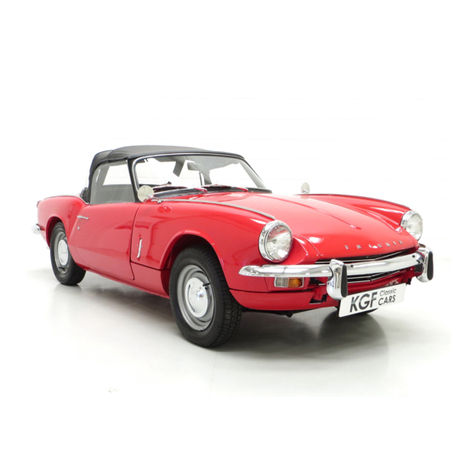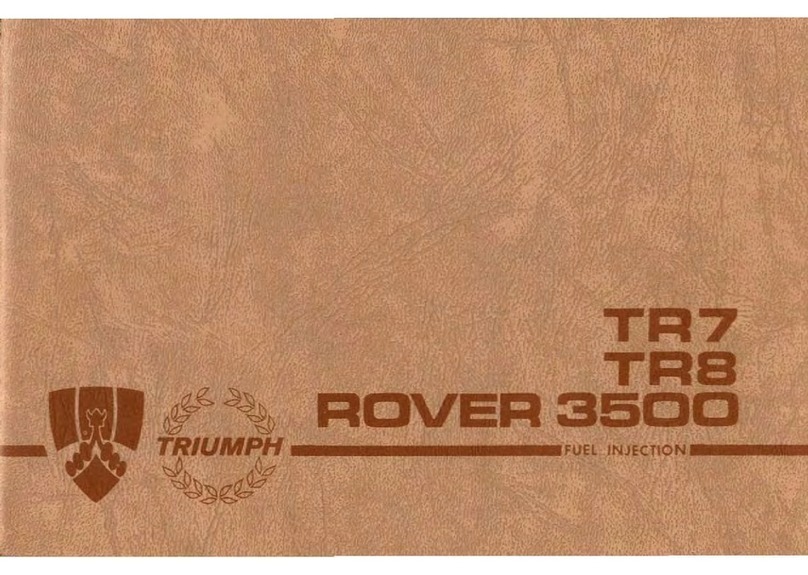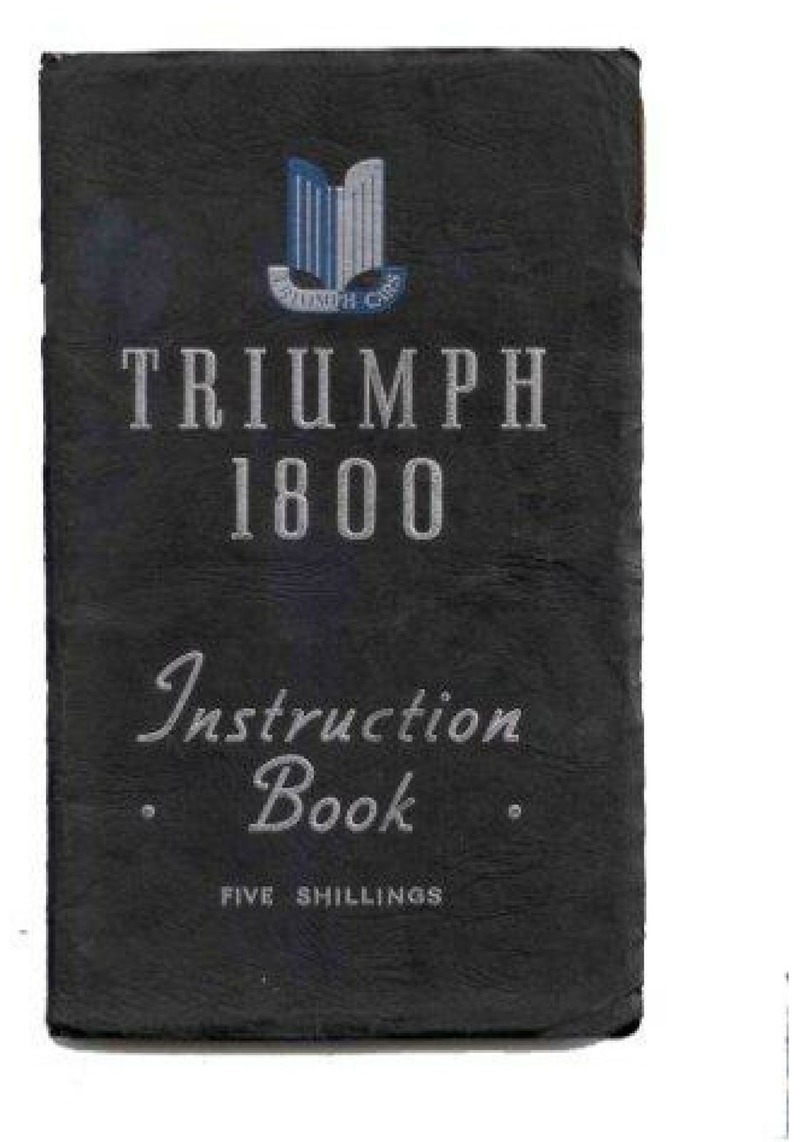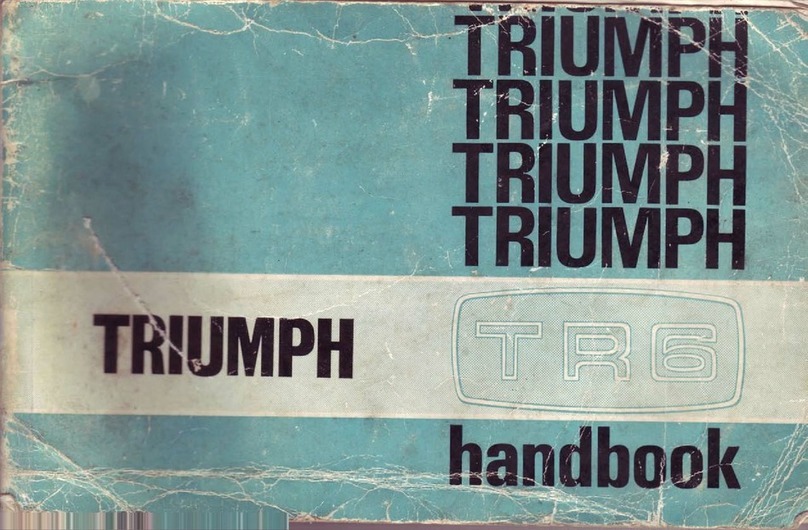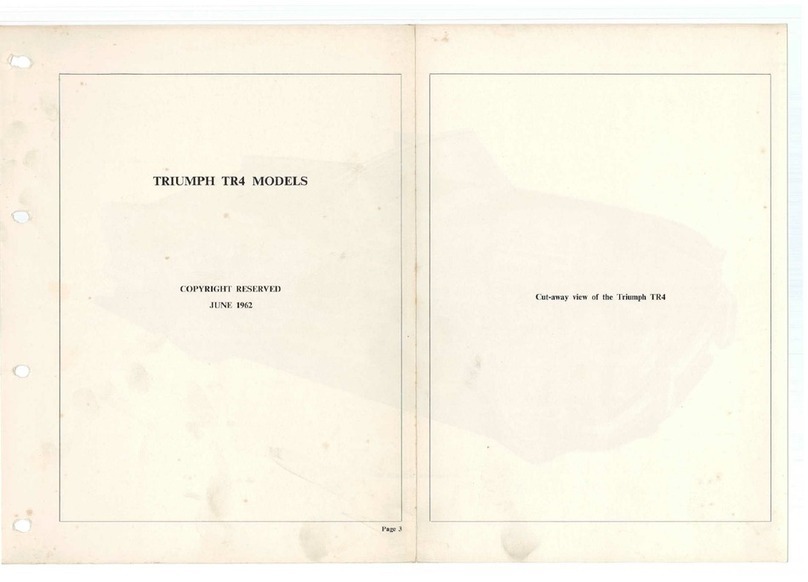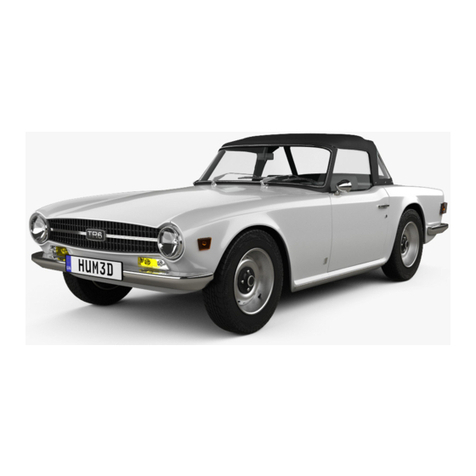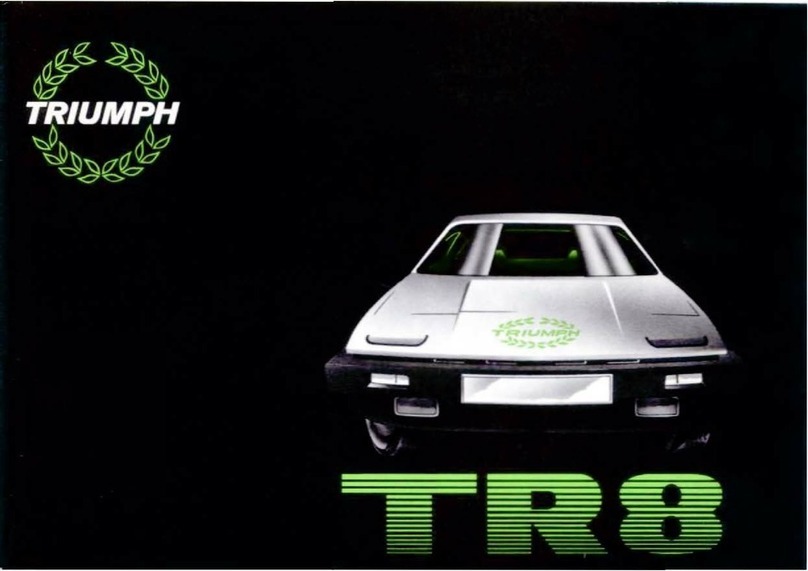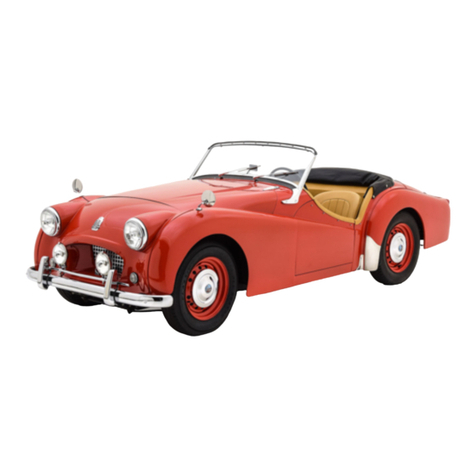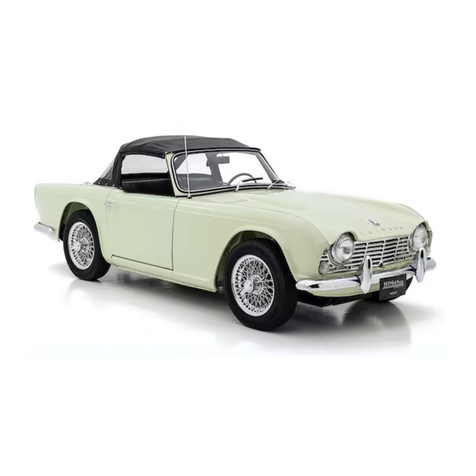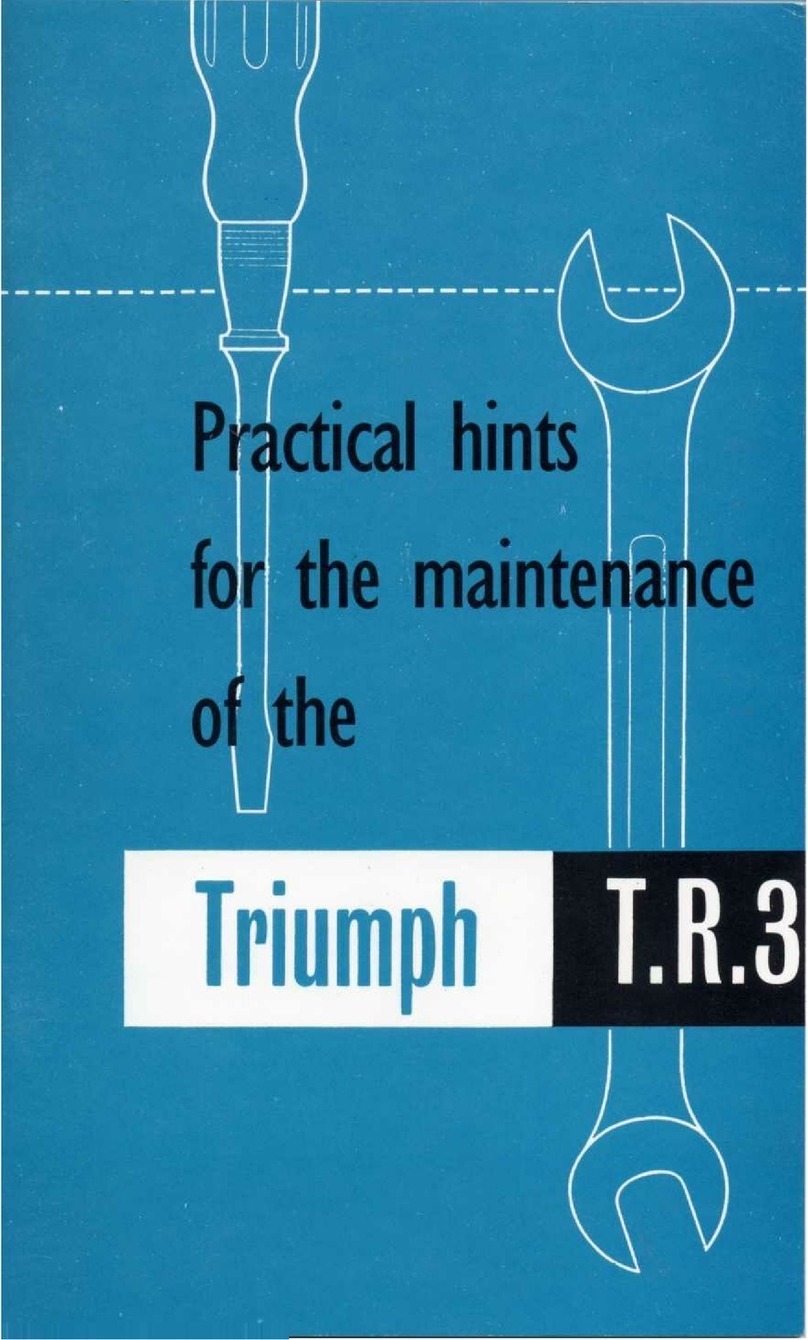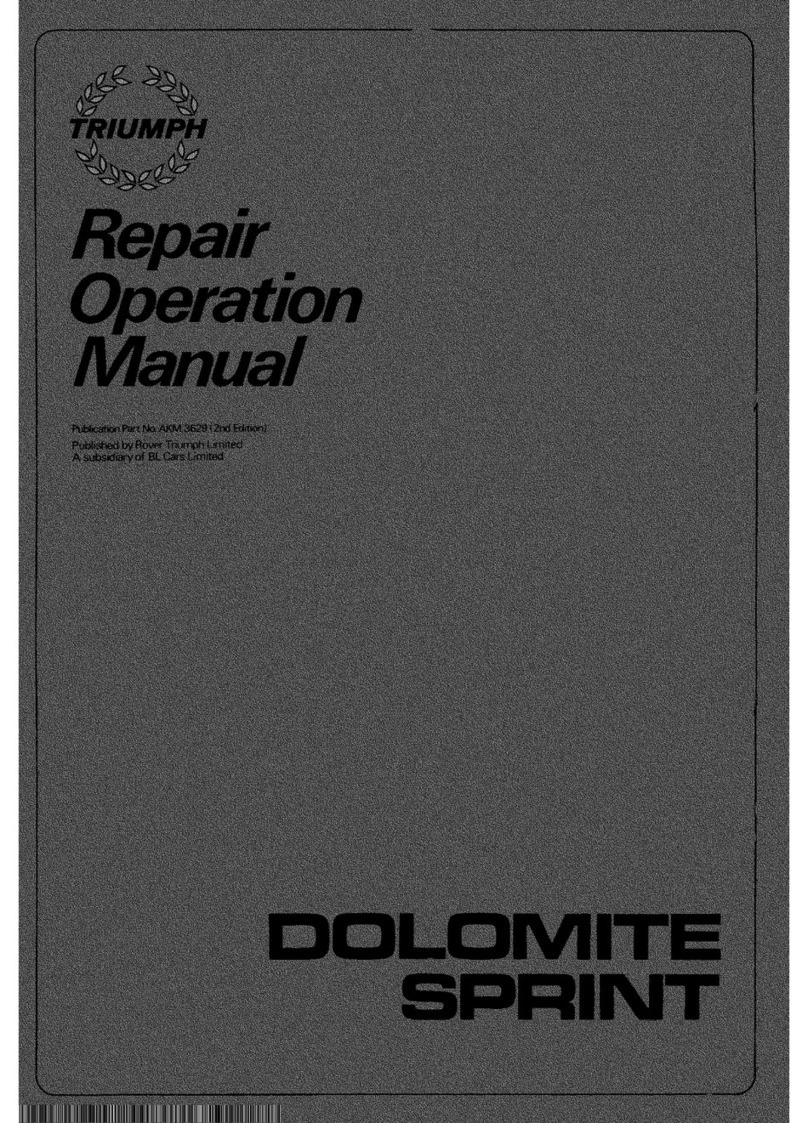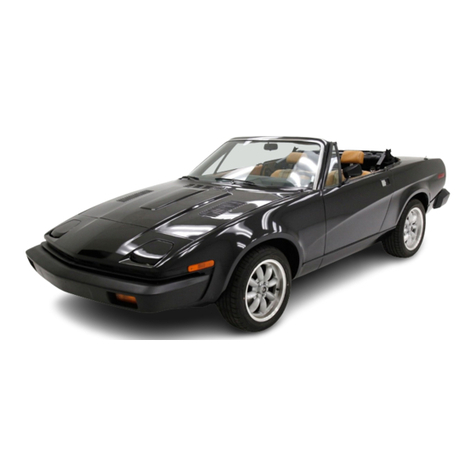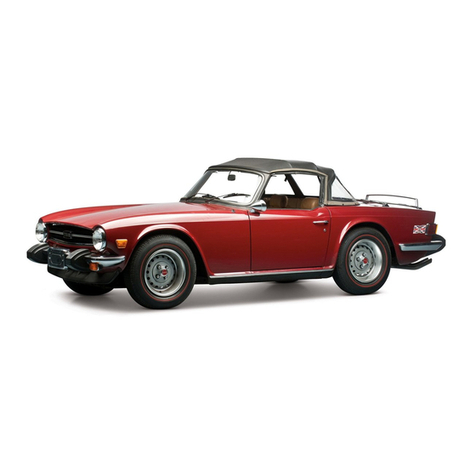FOREWORD
Surress, rlre osDirution of all human pursuits. has. in theworlil of motor sport. bccomesynonymous with the
nane of Triuiph. The-many
loureli obtained
by T,R.'s in intprnational
and locolcompetitions
haD?
gained
them ait enviabie rcputotion i7 *hi"h ,urry ownir is justifably ptouil.
The newestof the Ttiumph thotoughbreds,
the T.R.AA, combines
na@deuelopments
with thewellprou.enrally
rcsred
featuris ol its predicessors. -Wcwelcom"owaersto on eDprb;ilening circle of enthusiasts
and uish them
many-pledsont'houri of motoring in aililing nao honours to a name alreaily renowr.eil.
To cnsurea continuance
of thcsuperbperiormonce whieha
-T.R,4A.is capable
ofgiuing. coupledwith reliability
anil economy,regular core onil dttention ore neccssary. Au essennalinJormalton anclthPpcrtods allpr unr.n
attention is"recokmended., are cotutained, in the following pages, Owners ate aih;ised to read them carefully
and noteparticularly the ad'aiceon lubrication'
New.parts or accessories,
when needed,,
arc obtainable only through authofiseil Triumph dealers, u;ho in
ad,ilition to being trained n girn expert adnice and attentiin, are also equipped to utuilertaherepairs and
ooerhauls which are bevonil the scopeof most owners,
STANPART
Spare Parts Service
Rept@ment pdrs are nol supplied from ltre facrory.Iirect ro the gen€ral public, but are diEted throush Distributors who, id turn, supplv their
cenuire spe parls are markered under rhe uade marl Sldpan an<tcaiiy rhe samegu&mlee as lhe orieinal parr. The"samehigh qualirv
dalerial is:u$d dd rhe srricLed
aeuracy mainrsined duritrg muufacture, you are advi$d. (heeibre. ro iosist on the useol Lbese
pans shouro
iliii!1.;,!i,ti.;; ii-""1,"".v.^'i;];;-b.;;i.i;iii"t d. noirc'arrv rhe trade nrk stanpa( qil invaridare rhe eueant@ if nlted 10 vou. vehicre.
The .lescriorions and iltu{rarions aDDearinsin rhis boor are nor bindine. The MANUFACIURER, therefore. rcFru€s $e rishl-$hilst
*li','iiii if,l "r;liil-i."'ii'Li ,liiii'iriiiir":t'ii.i,' desribed atrd irrusrar;d - ro make at atry ride. ivithour Decas&lv brinsitre.rhis book
;;:6:a'"i.'5ffi;";ii;;;i i; ;"f;;';G;ori!s aeenea oaveueot ror imp.oveFeat or fo' itrv meufactu'ing or comerciar r€ason'
